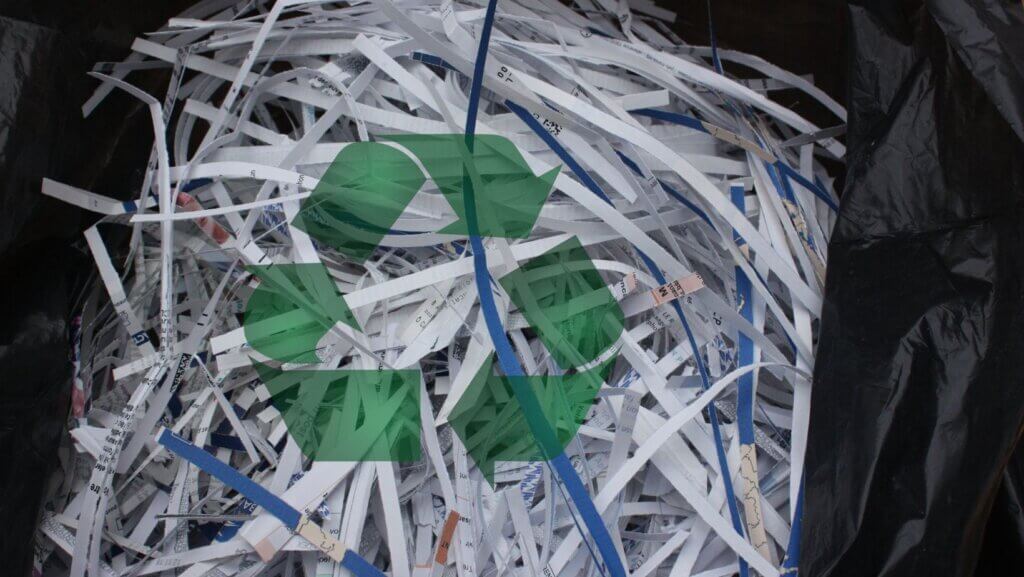
Data breaches are becoming more common and sophisticated today, posing a significant threat to individuals and organizations. Protecting sensitive information is essential, but it is equally important to dispose of it securely and responsibly. One effective solution is document shredding, which helps protect confidential data and benefits the planet in several ways.
What Is Paper Shredding?
Secure shredding is the process of destroying confidential documents, typically using a machine that cuts them into small pieces. This method is used by businesses and individuals to protect sensitive information from theft or misuse. Paper shredding can be done on-site or off-site, depending on the organization’s or individual’s needs.
Why Is Paper Shredding Important For Data Security?
One of the primary reasons for paper shredding is data security. Sensitive information, such as financial records, employee files, medical records, and customer data, can be easily stolen or compromised if not disposed of properly. Paper shredding ensures this information is destroyed beyond reconstruction, making it much more difficult for identity thieves or other unauthorized persons to access it.
Paper shredding is also essential for legal and regulatory compliance. Many industries, such as healthcare, finance, and legal, have strict data protection regulations that require businesses to dispose of confidential information securely. Failure to comply with these regulations can result in hefty fines, legal liabilities, and reputational damage.
Benefits Of Paper Shredding For The Environment
While paper shredding is primarily used for data security, it has several environmental benefits. The destruction of paper documents creates waste that must be disposed of, which can significantly impact the environment if not handled properly.
Shredding helps to reduce waste and conserve resources. When paper documents are shredded, the resulting debris can be recycled into new paper products, reducing the need for virgin materials. According to the Environmental Protection Agency (EPA), recycling one ton of paper can save 17 trees, 7,000 gallons of water, and three cubic yards of landfill space. This conserves natural resources and reduces energy consumption and greenhouse gas emissions associated with paper production.
Paper shredding also reduces waste going into landfills. When paper documents are not disposed of properly, they can end up in landfills or be littered in public spaces, posing a hazard to wildlife and the environment. By shredding and adequately disposing of paper documents, we can reduce the risk of these negative impacts and help keep our communities clean and healthy.
Tips For Effective Paper Shredding
To ensure the effectiveness of document shredding, it is essential to follow best practices for data security and environmental responsibility. Here are some tips for effective paper shredding:
Identify The Types Of Documents That Need To Be Shredded
Different papers have different sensitivity levels, so it is crucial to identify the documents that need to be shredded to protect sensitive information appropriately.
Use A Reliable And Secure Shredding Service
Choosing a reputable and safe shredding service is essential for protecting confidential information. Look for a certified company that follows data protection and environmental responsibility standards.
Consider On-Site Shredding
On-site shredding offers added security and convenience, as the shredding is done on your premises. This eliminates the need to transport sensitive information to a shredding facility and reduces the risk of information breaches.
Ensure Proper Disposal Of Shredded Waste
Once documents are shredded, it is essential to ensure that the resulting waste is appropriately disposed of. Recycling is the most environmentally friendly option but ensuring that a reputable and certified recycling facility handles the waste is essential.
Develop A Shredding Policy And Train Employees
Developing a shredding policy and training employees on best practices for document disposal is essential for ensuring effective and consistent shredding practices. This can include identifying the types of documents that need to be shredded, establishing a schedule for shredding, and providing that employees know the importance of proper document disposal.
Document shredding is an effective solution for protecting sensitive information and ensuring legal and regulatory compliance. But it is also an environmentally responsible practice that reduces waste and conserves natural resources. Businesses and individuals can enjoy the benefits of data security and environmental responsibility by choosing a reliable and secure shredding service, following best practices for shredding and developing a shredding policy.
With Earth Day approaching, it is an excellent time to reflect on how we can protect our sensitive information and the planet through responsible practices like paper shredding. ATI SecureDocs can help make your shredding processes safe and secure while keeping you in compliance with state regulations. Contact us to learn more about our document destruction solutions.



